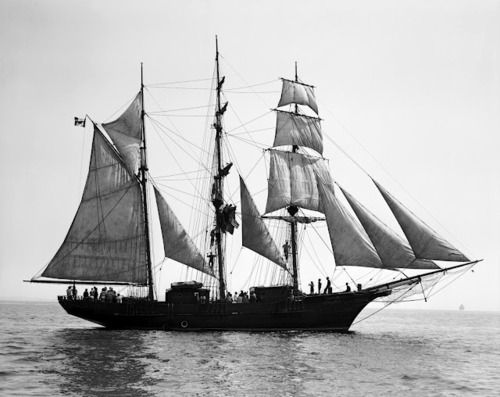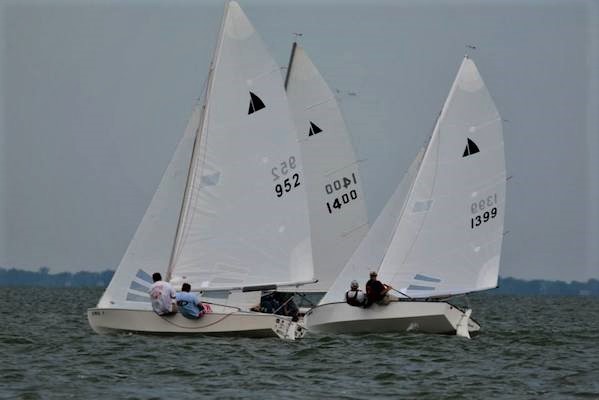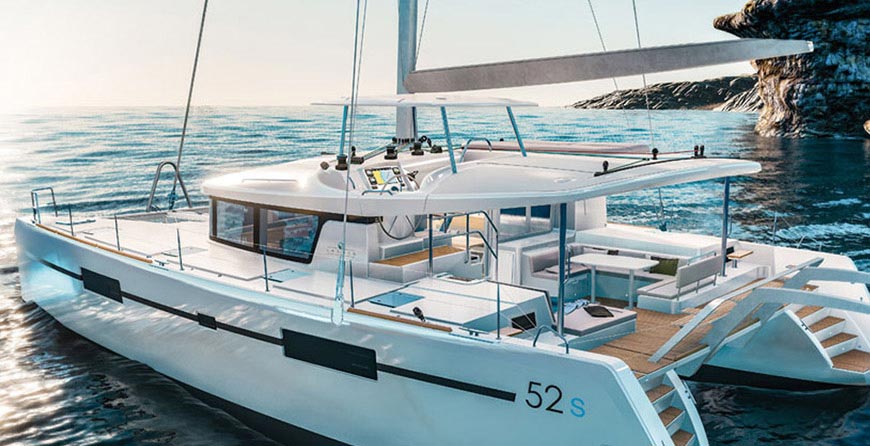
Older Sailboats
Sailboats used to look a bit different.

Middle Aged Sailboats
A slightly newer sailboat.

New Sailboats
The newest sailboats today can be very expensive.
Sailing has unclear begins. It dates back to prehistoric times. The invention possibly started in old times with someone observing that a piece of fabris against the wind moved and could be used to make a boat move faster.
The shape of sails has changed from squares to triangles. Square-rigged sails worked well, but only when the wind was hitting the sail at the very back, or very close to it. Triangle-rigged sails offered a wider variery of angles that wind could hit to propel the boat. Now, sails can work at almost all angles, except from straight on, or in "irons." The materials used to make the sail also improved, changing from natural fabrics to polyester or nylon. This allowed the sails to be move resistant to wind and water. The design of the hull changed how fast sailboats could go the most drastically. They came from rafts to giant tubs to the aerodynamic hulls they are today. This let the sails push the boats through the water at a faster pace and not weigh as much.
The steering oar was an important innovation that improved the steering of the boats. It was first invented by the Chinese who had the idea of having a moving device that could allow the boat to move in a direction different than the wind. Western civilizations later implemented stern-mounted rudders. It allowed the skipper to direct the boat when the wind could not. It was kind of a lever, it attached to the starboard side or at the stern. The steering oar became the tiller and rudder.
The addition of the keel is another innovation that changed how boats could change direction. It prevented the lateral movement from tacking and increased speed.
The oldest known sailing regatta (race) took place in 1775. It was the Cumberland Cup, which was organized by the Royal Thames Yacht Club, UK. Now, some of the well-known regattas are the America's Cup, Canada's Cup, and the Sailing World Cup.